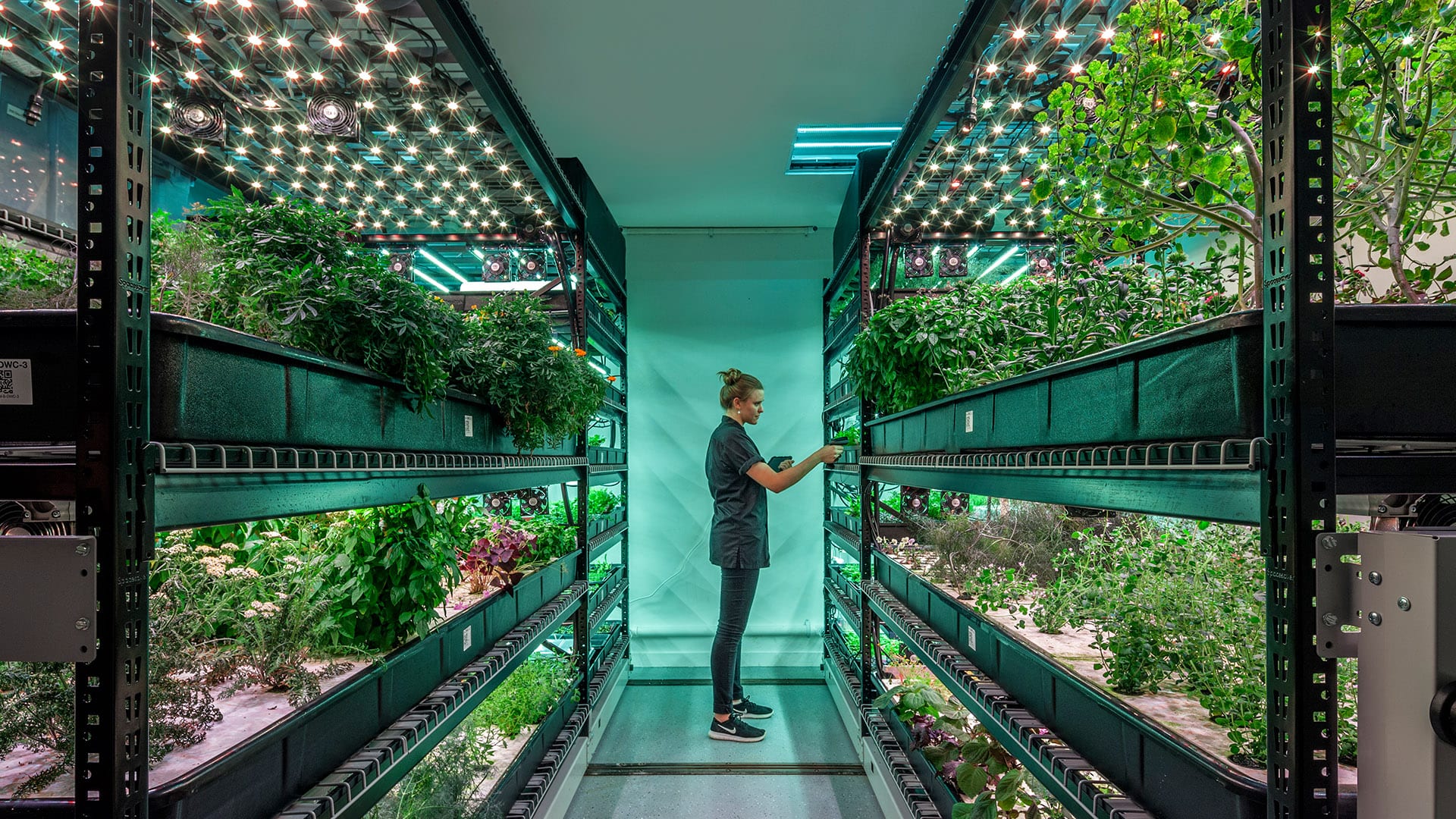From a former nightclub in Newark’s Ironbound to a basement in New York City’s tony Tribeca to shipping containers scattered out west, vertical farmers are seeding the future of agriculture and planting opportunities for investors, who see the farms meeting demand for locally-grown food.
The fast-growing vertical farming market promises high yields of crops grown with improved resource efficiency as farmers ditch tractors and overalls for timed LED lights and databases.
While some see the field as limited to growing only leafy produce, and look cautiously at some recent farm closures, others are betting on the practice taking root.
AeroFarms, a New Jersey-based vertical farming company, recently secured $100 million in funding, led by IKEA’s parent company, INGKA Group. The round valued AeroFarms at $500 million, according to the Financial Times, which broke the news of the latest investment. AeroFarms investors told the Financial Times that the company is profitable on an operating basis, but continues to invest heavily.
Vertical farming produces crops on stacked layers, often in a skyscraper or warehouse, instead of on a single layer in either a field or a greenhouse. Light, temperature, water and other factors can be controlled, enabling higher yields than traditional agriculture. Use of herbicides or pesticides is minimized and can be eliminated in a well-managed facility.
“Macro challenges are making vertical farming more attractive,” said Henry Gordon-Smith, founder of Agritecture, a global urban farming consultancy. “The demand for local grown food cannot be supplied by existing agriculture systems, while climate change poses challenges overall.”
Organic greens for Manhattan’s restaurants and grocery stores are harvested year-round by AeroFarms in Newark’s Ironbound district about 15 miles from Midtown. Competitors Bowery Farms and Square Roots also offer New York-area consumers local vertical-farmed produce. Farm.One, a producer of rare herbs, edible flowers and microgreens, is located in Manhattan’s Tribeca neighborhood.
The growth isn’t just in the densely populated Northeast, large vertical farms are found in places such as California, Michigan and Washington.
“For large producers it takes seven or eight years before there’s a return on investment, but for smaller producers it can be quite a bit quicker,” Gordon-Smith said. “Farm.One, which specializes in supplying herbs and greens to Michelin-star restaurants, had payback in under three years.”
The AeroFarms deal comes after Germany’s distributed vertical farm startup Infarm raised $100 million last month, Bowery obtained a $90 million Series B last year, and Plenty’s $200 million Series B from 2017 remains the largest in the sector, Agfunder News reported last week.
Vertical farming is expanding worldwide, with many of the biggest facilities located in Europe. Asia and the Middle East are seen as particularly promising growth areas because of population density and water scarcity.
Advances in lighting and automation are helping make vertical farming more profitable. Social impact investors should follow technological developments that may allow new players the ability to accelerate their vertical farming business more rapidly than incumbent firms. LED technology was “prohibitively expensive” a few years ago but is now affordable, according to Gordon-Smith.
Some investors are betting on the technology to avoid getting into the business of growing and selling food but to profit from the growth of interest in vertical farming. Bloomberg News recently reported that several vertical farms have closed in the past few years, and experts caution that farmers and investors must learn from mistakes.
“While not deep green, vertical farming reduces the need for water, agricultural land and food miles,” Gordon-Smith said.






















